Also known as ‘Ancient City’ or 'Eternal City’, Kyoto is a city on Japan’s Honshu island. It was once the imperial capital of the country until the monarchy moved to Tokyo. Rubbing shoulders with imperial palaces of this historic city are its ancient Buddhist temples, Shinto shrines, traditional wooden houses, beautifully landscaped gardens, modern museums, soaring steel towers, and more! The city is a popular tourist destination welcoming millions of visitors each year from Japan and the world. The city is also well-known for its kaiseki (formal Japanese dining style) tradition, geisha (traditional Japanese female performing entertainer), unique foods, markets, shopping, and costumes. Cherry blossom and fall foliage seasons along with religious festivals are the best times to visit the city. For more details, take a look at our list of the best places to visit in Kyoto, Japan.
1. Kyoto Imperial Palace (from USD 67.0)
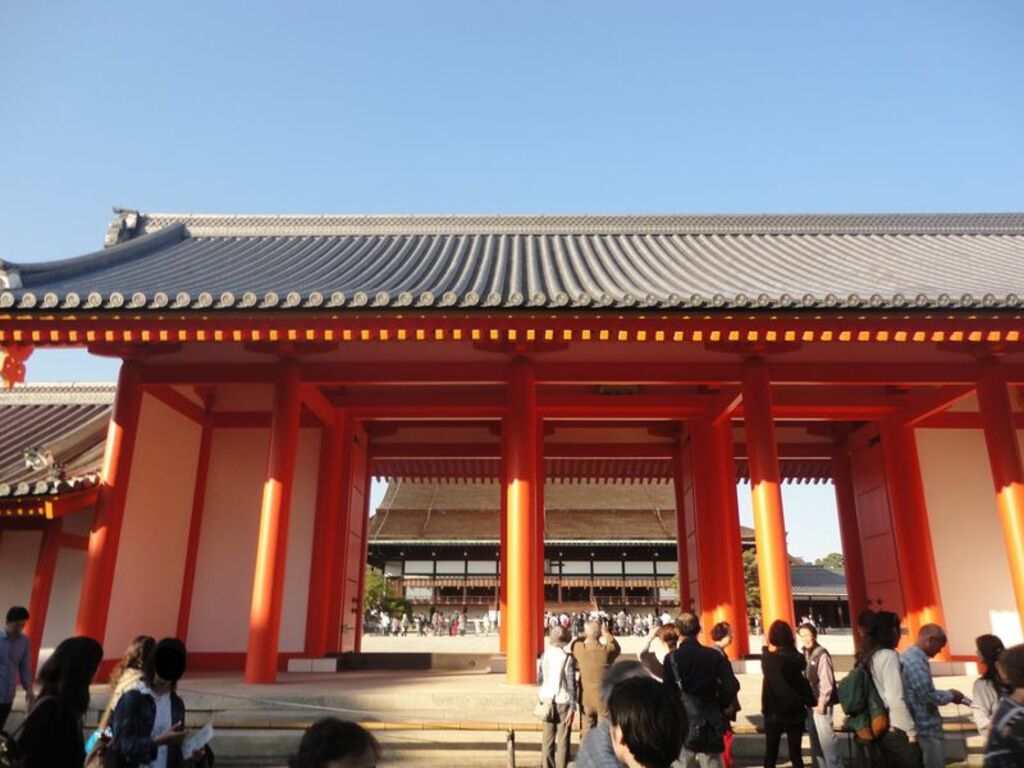
As the former capital of Japan, Kyoto was the seat of the government and the residence of the imperial family. Thus, the Kyoto Imperial Palace is the former palace of the Emperor of Japan and is located on Kyoto Imperial Park grounds. Visitors can explore the palace grounds and gardens, admire the weeping cherry trees, and marvel at the Konoe Pond. Many different architectural styles can be seen in the palace buildings as most areas still retain their original look from the times when the rulers lived here.
byFood Experience
1) Premium wagyu course at The Junpei Hotel
On your visit to Kyoto Imperial Palace, be sure to book this rickshaw tour with byFood that takes you through the streets of Kyoto. The local rickshaw driver will guide you through the hidden gems of Kyoto on this 45-minute journey and end the tour at The Junpei Hotel in one of the wings of the palace. Here, you will get to enjoy a premium Wagyu course meal at Nikukappou Futago Restaurant. The high-quality wagyu beef is grilled over an open flame, allowing you to savour various cuts such as beef loin, filet, sirloin, and more.
Kyoto Morning Tour: Kyoto Imperial Palace, Golden Pavilion
Duration: 4 hours 30 minutes
Rickshaw Tour and Wagyu Cuisine in Kyoto
Duration: 3hours
2. Nishiki Market (from USD 95.0)
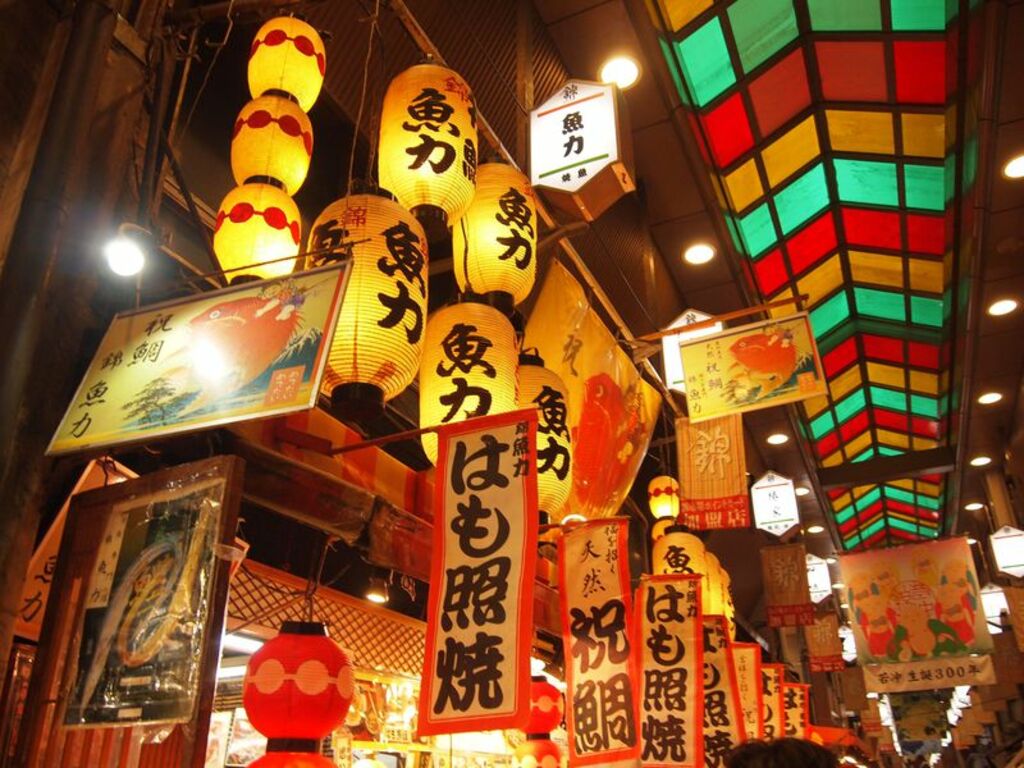
A foodie haven, Nishiki Market is a must-visit spot for all things related to food. This centuries-old market situated in a narrow five-block area houses over 150 shops and stalls selling all manner of culinary items - from cookware through fresh fish to pickles. Shops range in size from small stalls to two-storey establishments. It is nicknamed ‘Kyoto’s Kitchen’ and is also the best place to sample some of Kyoto’s best food offerings like tofu, seaweed, traditional sweets, sushi, etc. Situated in downtown Kyoto, Nishiki Market is easily accessible by many modes of transport and should be on every visitor’s radar.
byFood Experience
1) Nishiki Market and Gion tour
Discover the charm of Kyoto’s culture through its delectable culinary offerings, from street food favourites to traditional delights, while strolling through the lively Nishiki Market and Gion. Embark on a three-hour culinary and historical journey with a byFood guide as you dive into the world of local cuisine and the city’s captivating history. Sample seven dishes that capture the essence of Kyoto’s flavours, including Yuba with tofu skin, Onigiri rice balls, crispy fish cakes, Hamo daggertooth pike conger, Japanese omelettes, Sake rice wine, and the sweet finale of Japanese wagashi treats. Note that the menu is subject to variation.
Nishiki Market and Culture Walking Tour in Kyoto
Duration: 3hours
3. Philosopher's Path (Tetsugaku no michi)
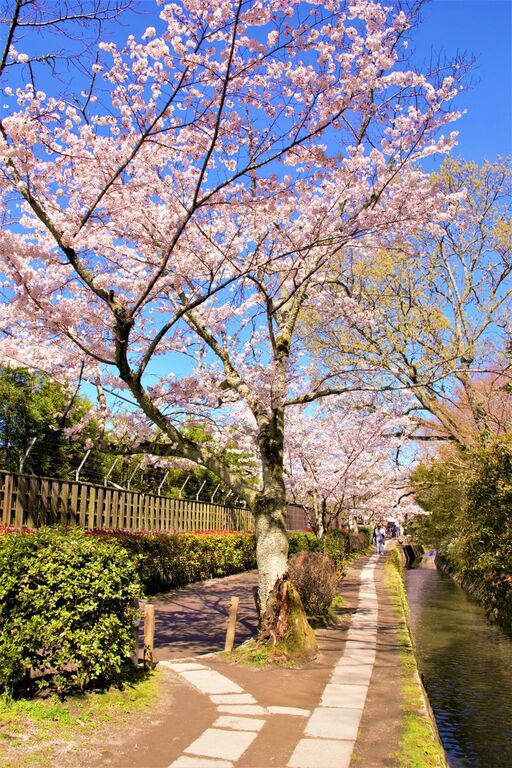
Philosopher’s Path or Tetsugaku no michi is a very popular walking path in Kyoto that is lined with cherry trees and follows the route of a narrow canal. It was originally known as ‘Small Thinking Path’ and the pretty cherry trees, quietly flowing canal water, stone-lined walking path, small restaurants and cafes, peaceful houses, small temples, and shrines on either side of the path provide an ideal setting for contemplation. Philosopher’s Path is also a popular cherry blossom viewing spot in Kyoto.
You might be interested in these Airbnbs!
4. Arashiyama (from USD 279.13)
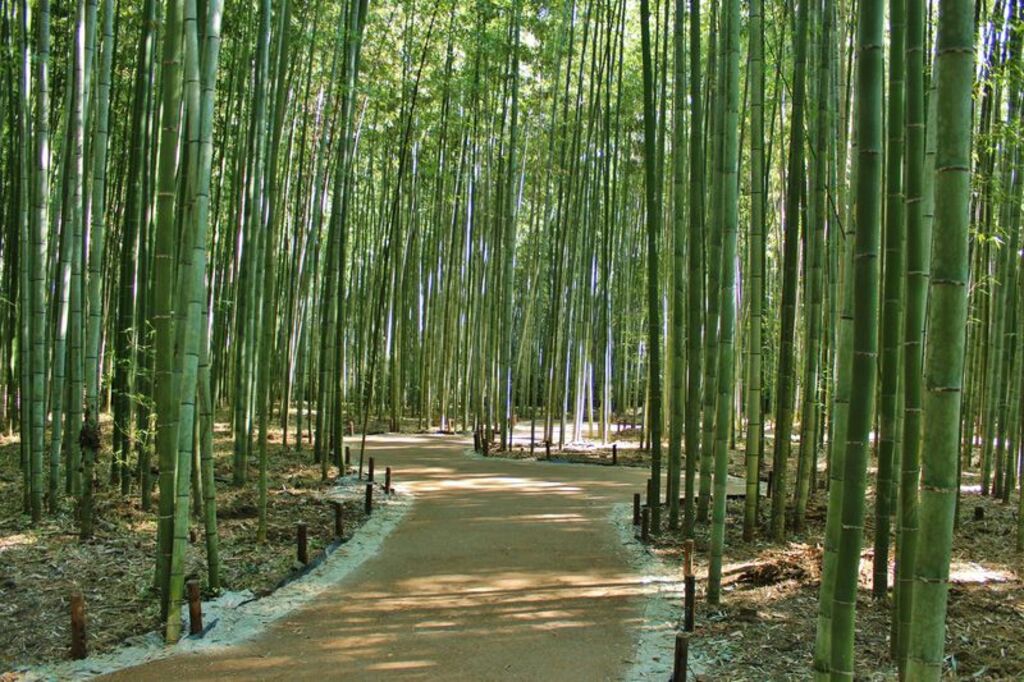
Situated on the outskirts of Kyoto, Arashiyama is a nationally designated place of scenic beauty. It is most famous for its bamboo groves that can be explored via walking paths or bicycle rides. Another famous landmark of Arashiyama is the picturesque Togetsukyo Bridge that looks even more beautiful against the forested mountain backdrop. Arashiyama is also home to one of Kyoto’s five great Zen temples, Tenryuji Temple, which is also a UNESCO World Heritage Site. Several other noteworthy temples and shrines are also located here.
Arashiyama: Bamboo Grove and Temple Tour
Duration: 6.0 hour
5. Kyoto Tower

Towering over the ancient temples and shrines of Kyoto is the rather modern and tallest structure of the city, Kyoto Tower. Visitors can go to the observation deck of this 131-metre (429 feet) tall steel tower and take in panoramic views of Kyoto in every direction. Spot your favourite landmarks, check out the cityscape, and on clear days, you can even see as far as Osaka. It is also a good spot for admiring sunset views of the city. A number of souvenir shops, restaurants, a hotel, and a public bath are also situated in the building below the tower.
Kyoto Tower Admission Ticket
Duration: 15 Min - 30 Min Duration
6. Heian Shrine

A relatively newer shrine among the ancient shrines and temples of Kyoto is the Heian Shrine. This Shinto shrine was built in 1895 to commemorate the 1100th anniversary of the foundation of the city as the capital of Japan (Kyoto was Japan’s former capital). Visitors can have a pleasant time exploring the various parts of the shrine complex. There is a massive torii gate (traditional Japanese gate), the green and vermillion painted main shrine building and multiple scenic gardens that offer walking paths, myriad blossoming trees and ponds. The garden complex of the Heian Shrine is also a popular cherry blossom viewing spot.
7. Hōkanji Temple (Yasaka-no-Tou)
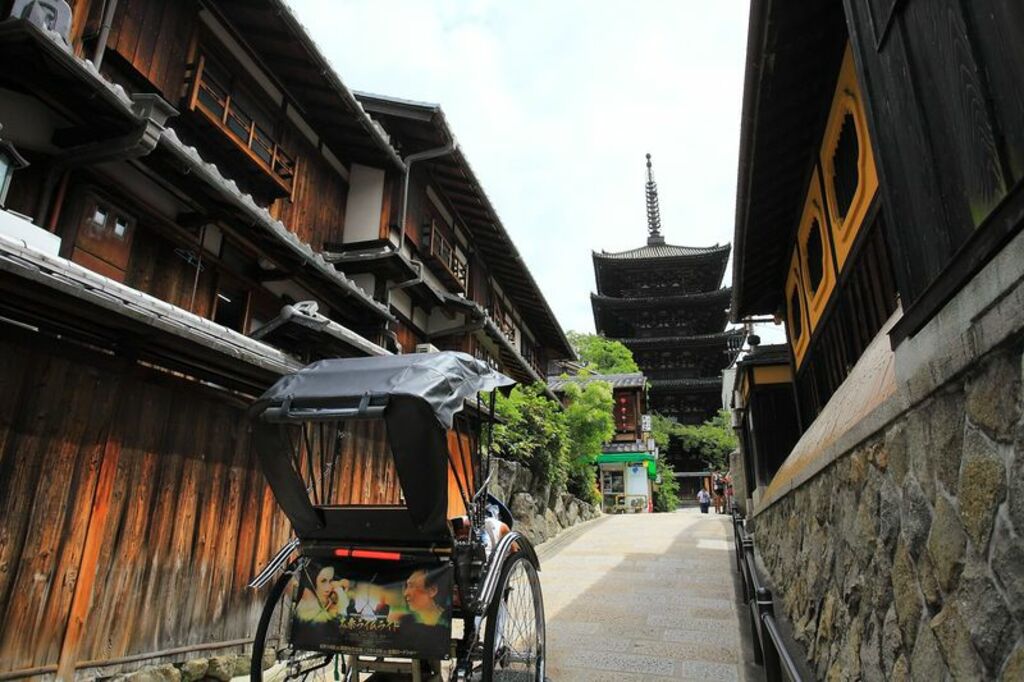
Easily recognised by its majestic five-storey Buddhist pagoda, Hōkanji Temple is another ancient temple of Kyoto located in the Higashiyama Ward. It is commonly known as Yasaka-no-Tou (Yasaka Pagoda) because of its 46-metre (150 feet) tall pagoda that was built in the fifth century. Visitors to the temple can enter the pagoda and admire its traditional architecture, ancient paintings, statues, and other features. The pagoda can be seen from afar and is even more beautiful at night when the lights from the nearby shops and restaurants give it a magical glow.
8. Kiyomizu-dera (from USD 942.0)
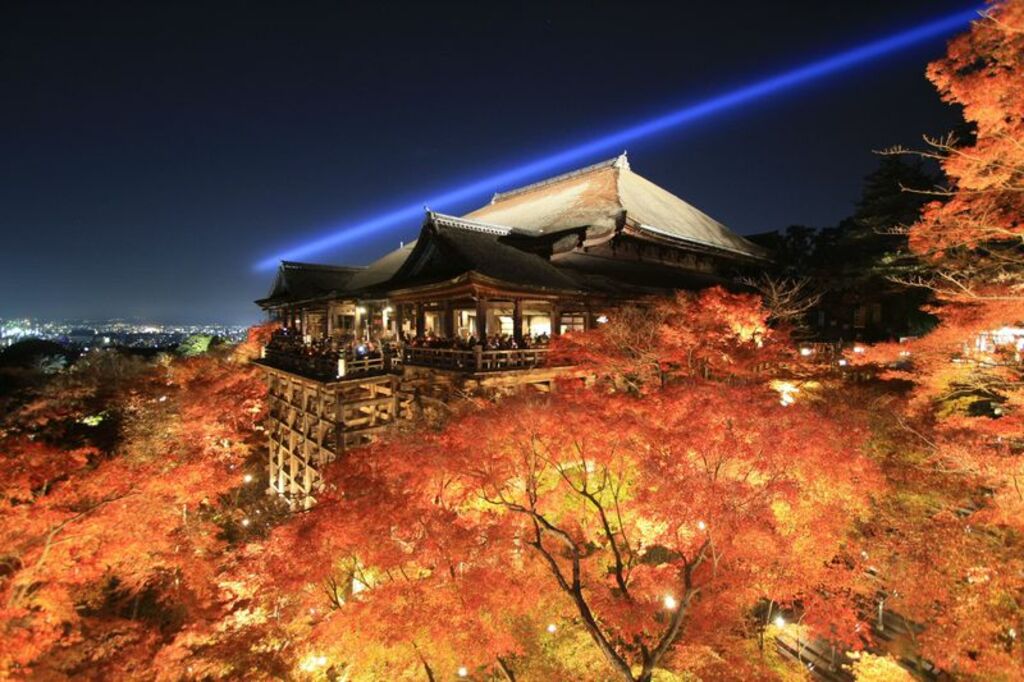
Kiyomizu-dera is a UNESCO World Heritage Site and one of Kyoto’s most well-known Buddhist temples. The most prominent feature of the temple is its wooden Kiyomizu Stage that juts out of the main hall and affords spectacular views of Kyoto city and the wooded areas below, especially in the cherry blossom and autumn seasons. The temple is also renowned for its eleven-faced and thousand-armed statue of Kannon, goddess of mercy. Visitors to the temple can also admire its fascinating architecture, drink the pure waters of the Otowa Waterfall, and visit the various other halls of the temple.
Private Nara Tour with Government Licensed Guide & Vehicle (Kyoto Departure)
Duration: 8 hours
9. Nijō Castle (from USD 80.0)
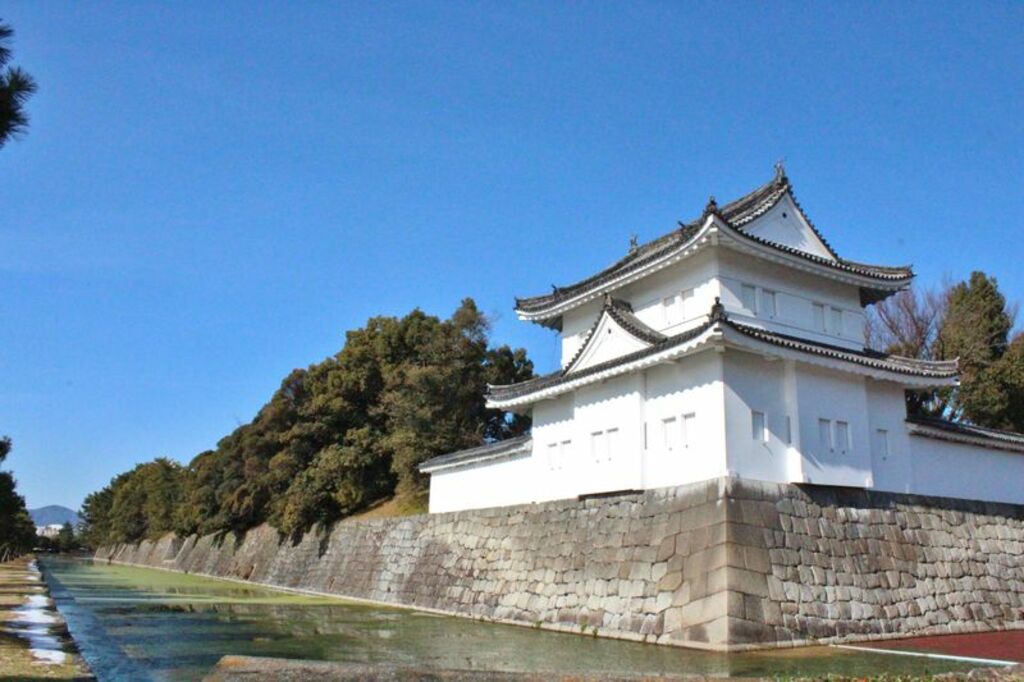
Nijō Castle is the former residence of the Tokugawa shoguns (military commander and feudal lord in Japan) and was built in the early 1600s to showcase their power and prestige. The castle is surrounded by a wide moat and thick stone walls. Visitors enter the massive palace grounds via a majestic gate and can explore the palace as well as its beautiful gardens. The castle itself is very impressive with rich decorative detail, painted screens, traditional Japanese art masterpieces, beautifully painted sliding doors, exquisitely decorated ceilings, and unique nightingale floors which would squeak when stepped on, alerting the guards.
Nijo Castle and Imperial Palace Visit with Guide
Duration: 2 hours 30 minutes
10. Yasaka Shrine
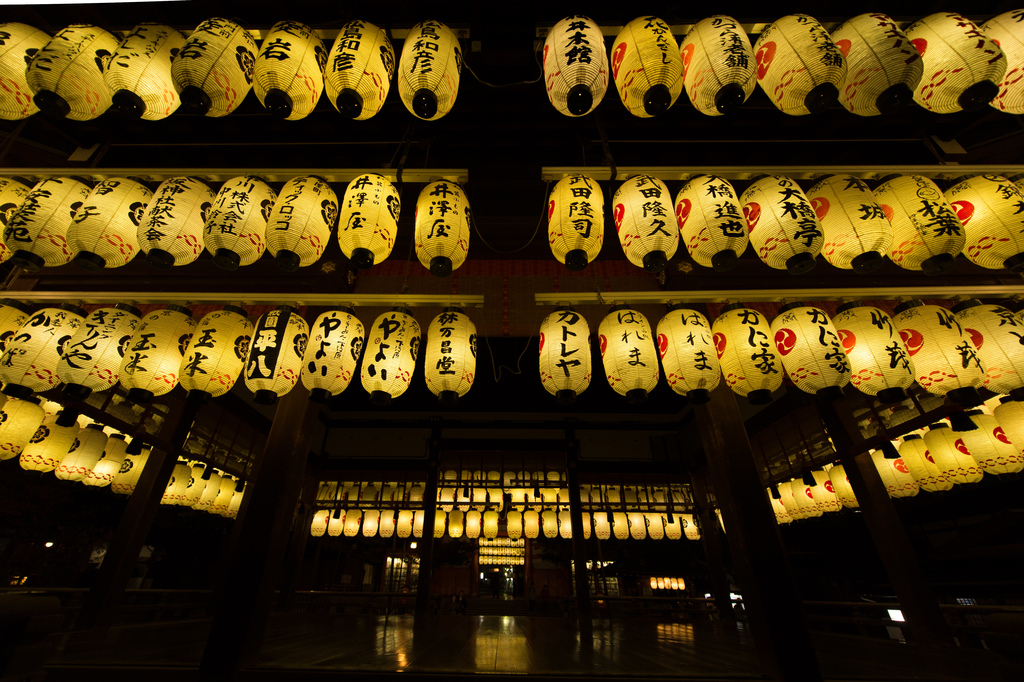
Also known as Gion Shrine, Yasaka Shrine is a Shinto shrine located in the famous Gion district of Kyoto. The shrine hosts the popular Gion Matsuri summer festival each year that is attended by millions of visitors. Its brightly painted buildings are very pretty to look at, especially at night when its lanterns are illuminated. Visitors can admire the massive stone torii gate, the traditional architecture of the main hall and the performance stage. Due to its proximity to Gion district, it is frequented by many geisha (traditional female Japanese performing entertainer) and thousands of tourists.
11. Ryōan-ji
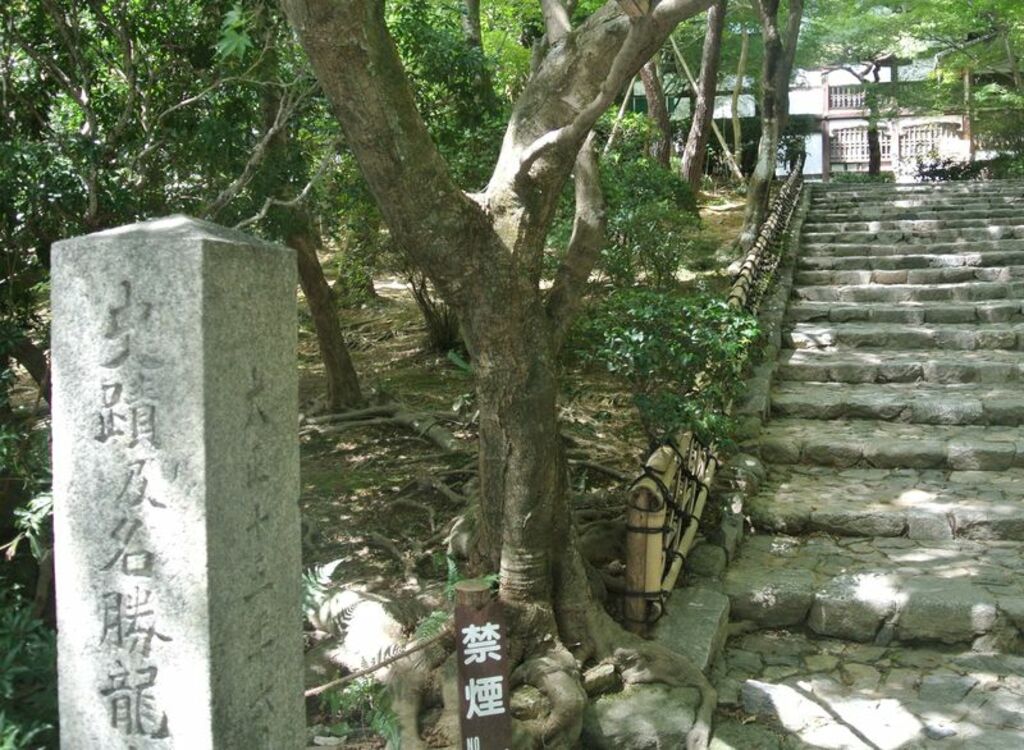
Ryōan-ji is a Zen Buddhist temple in Kyoto that is very famous for its rock garden that is made up of an earthen wall-surrounded, rectangle-shaped area covered in white pebbles on which 15 rocks and patches of moss are arranged. The rock garden has mysterious origins and its meaning is also shrouded in mystery. Visitors can meditate by the rock garden from a viewing platform or roam the massive grounds of the temple. A large garden area with a beautiful pond and a small shrine that is accessible by means of a picturesque bridge are present here, too. Various other temple buildings are also scattered across the temple grounds.
12. Gion Corner (from USD 201.0)

Situated in Yasaka Hall of Higashiyama district in Kyoto is the Gion Corner where visitors can view and appreciate seven professional performing arts of Kyoto. Catering to visitors from abroad, the performances are explained in English and is the perfect place for tourists to see traditional arts like kyomai dance, koto harp, kyogen classical comedy, bunraku puppet theatre, flower arrangement, gagaku music of the imperial court, and tea ceremony. Visitors can also observe maiko (apprentice geisha) and geiko (geisha) presentations here.
byFood Experience
1) Enjoy a Kaiseki meal in Gion
Discover the enchanting allure of Gion on this byFood tour as you wander the illuminated streets of Kyoto at night guided by a local expert. Immerse yourself in the tales of the ancient capital’s history and its fascinating geisha culture. Your guide will take you through the intricacies of Kyoto’s rich heritage.
The grand finale of this tour is a lavish Kaiseki multi-course feast that’s a symphony of flavours. With theatre art and local delicacies, you’re bound to have a night rich with Japanese culture.
Gion Tour with Kaiseki Meal in Kyoto at Night
Duration: 3hours
13. Tenryū-ji

As the topmost Zen Buddhist temple of the city, Tenryū-ji is a major temple complex belonging to the Rinzai Zen sect of Buddhism in the Arashiyama district of Kyoto. This world heritage site was constructed in the 1300s and has a number of buildings that visitors can explore. Check out the kuri (temple living quarters) which is the most commonly photographed Tenryu-ji building, the main hall with its Buddha images and cloud dragon painting on the ceiling, beautifully landscaped gardens, etc. Its garden is especially a must-visit spot here due to its picture-perfect landscaped features, like a pond that is surrounded by pine trees and rocks in the foreground and Arashiyama mountain’s forests in the background.
14. Arashiyama Monkey Park Iwatayama
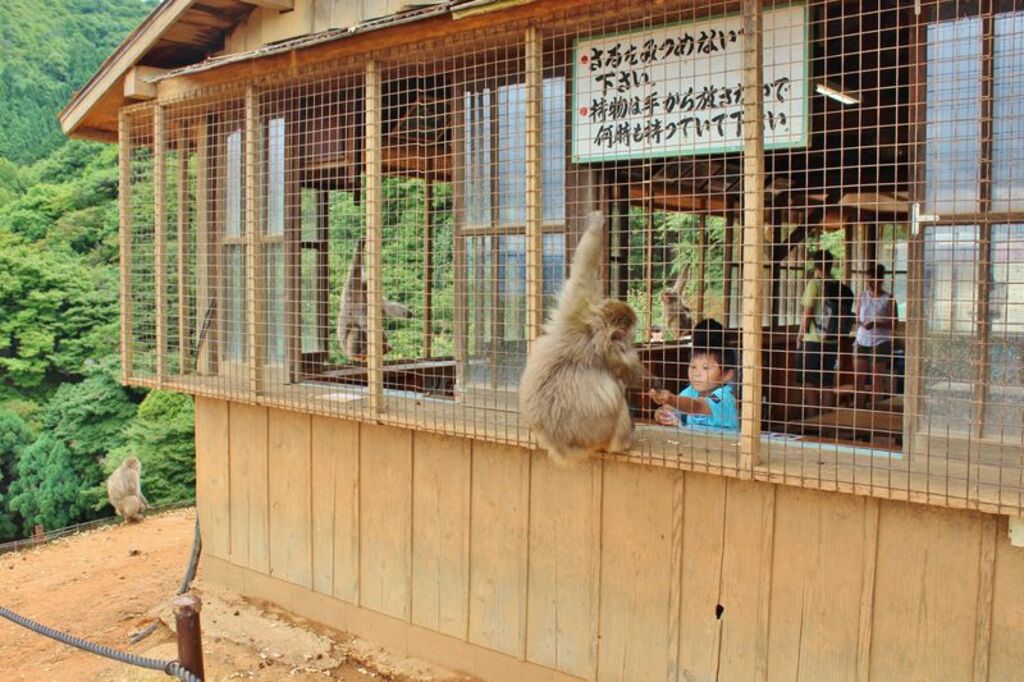
A unique place to go to in Kyoto is Arashiyama Monkey Park Iwatayama located on the slopes of Mt. Arashiyama. Also known as Iwatayama Monkey Park, this park is home to wild Japanese macaque monkeys that are often seen running around and swinging off the tree branches here. Visitors have to climb up a winding path surrounded by lush forestry to reach the top where a different kind of scene awaits you - you go inside a cage from where you can feed the monkeys on the outside! Superb views of Kyoto city can also be observed from the top.
15. Katsura Imperial Villa

Constructed in the mid-1600s for members of the Japanese imperial family, Katsura Imperial Villa is a fine example of traditional Japanese architecture and is said to have one of the world’s most beautiful Japanese gardens. It consists of a residential villa with several auxiliary buildings and beautifully landscaped gardens. Though visitors are not permitted inside the buildings, many walking paths go past them, through the pretty gardens and around the central pond.
16. Higashiyama Jisho-ji
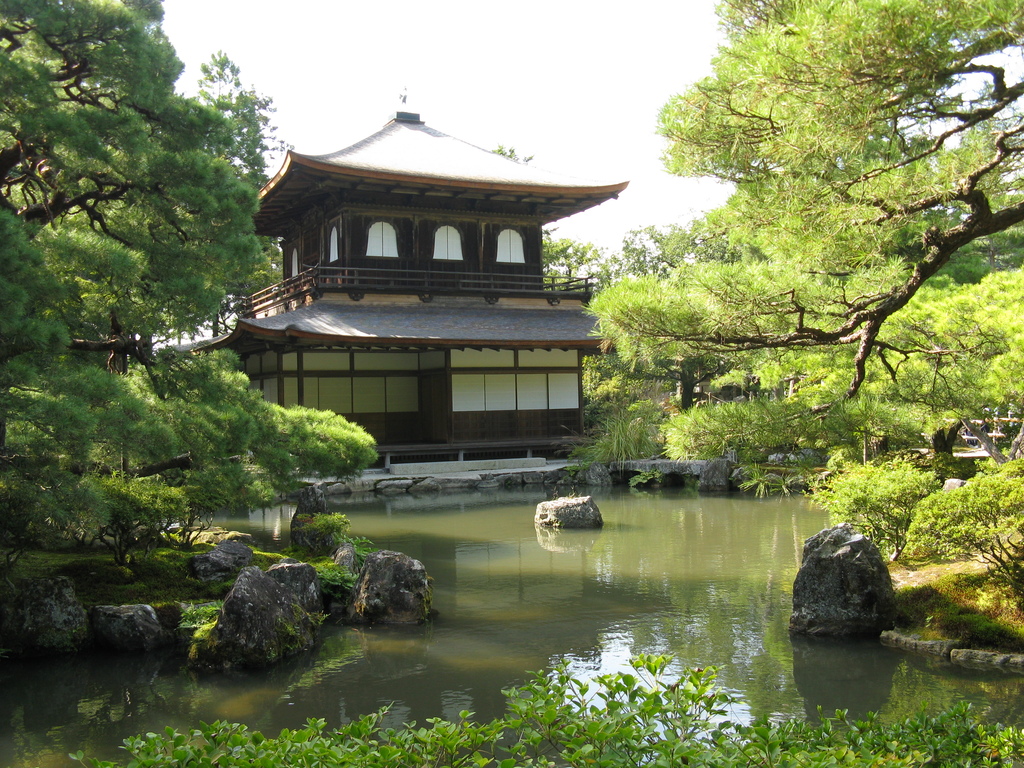
Popularly known as Ginkaku-ji (Silver Pavillion), Higashiyama Jisho-ji is a Zen temple in Kyoto that is modelled after the famous Kinkaku-ji temple. But unlike Kinkaku-ji, this temple’s exterior is not covered in gold or silver leaf. Visitors can admire the simplicity of the main temple building, several other temple buildings, a unique sand garden, a pretty moss garden and a pond, all of which can be explored by walking paths. The grounds of Higashiyama Jisho-ji are often considered the finest example of Japanese landscape architecture.
17. Kifune Shrine
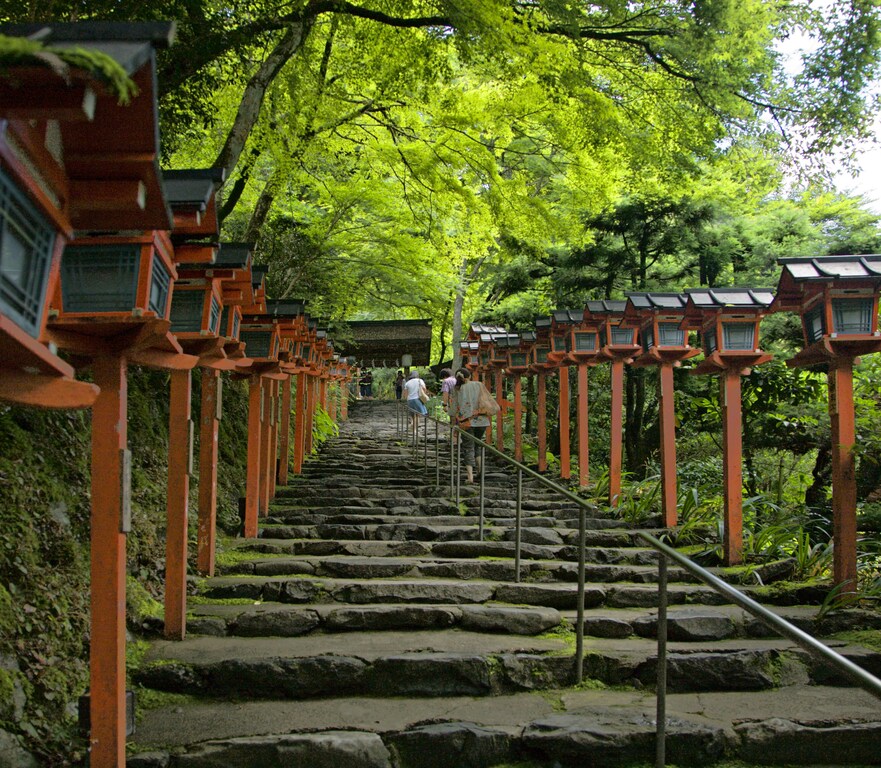
Kifune Shrine is a Shinto shrine situated in the Kibune village of Kyoto. Beautiful to visit in any season, the shrine is dedicated to the god of water and consists of three shrines - main hall, Yui no Yashiro, and Okunomiya. The path leading up to the main hall is breathtakingly pretty and one of the most photographed, for it consists of a stone stairway lined with picturesque wooden red lanterns and a canopy of lush vegetation. You can also get your fortune told by dipping a special paper in the sacred water here or drink from the mountain spring.
18. Togetsu-kyō Bridge
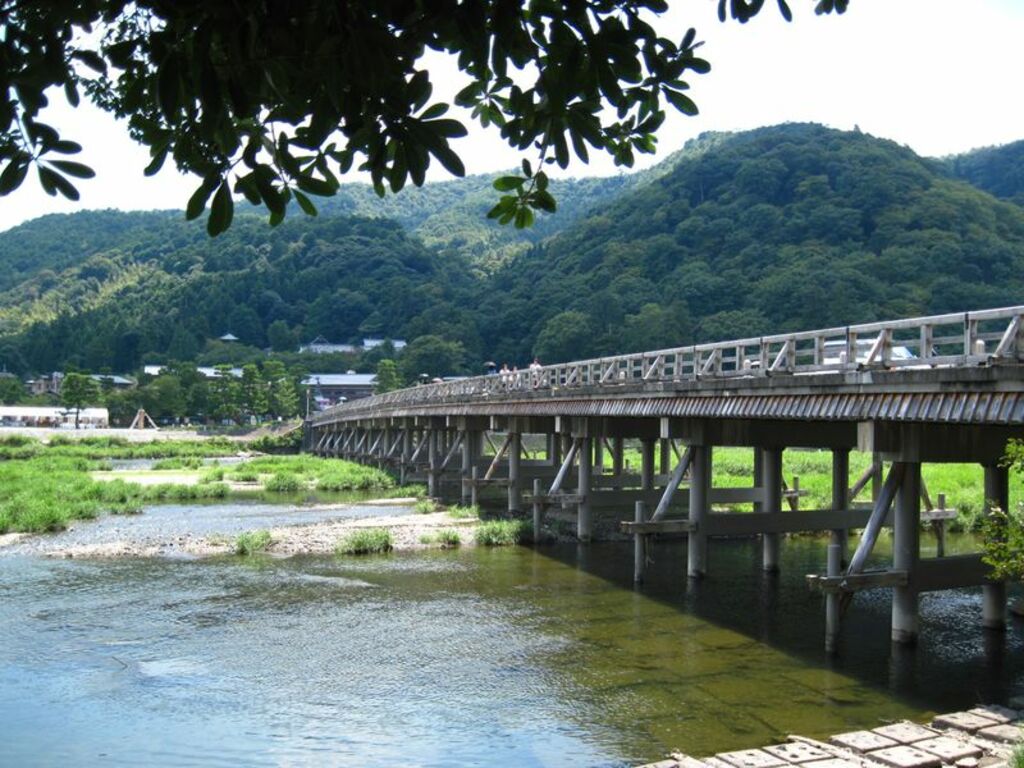
A popular attraction of the Arashiyama district of Kyoto is the 155 metres (509 feet) long Togetsu-kyō Bridge. This wooden bridge stretches across the Katsura River and offers postcard-perfect views of the surrounding Arashiyama Mountain. In the cherry blossom season and in autumn, when the leaves change colour, this bridge offers the perfect spot from where to observe the riot of colours on the forested mountain. Visitors can also feed the koi (carp) fish of the river or dine at one of the many riverside restaurants here.
19. Eikan-dō Zenrin-ji
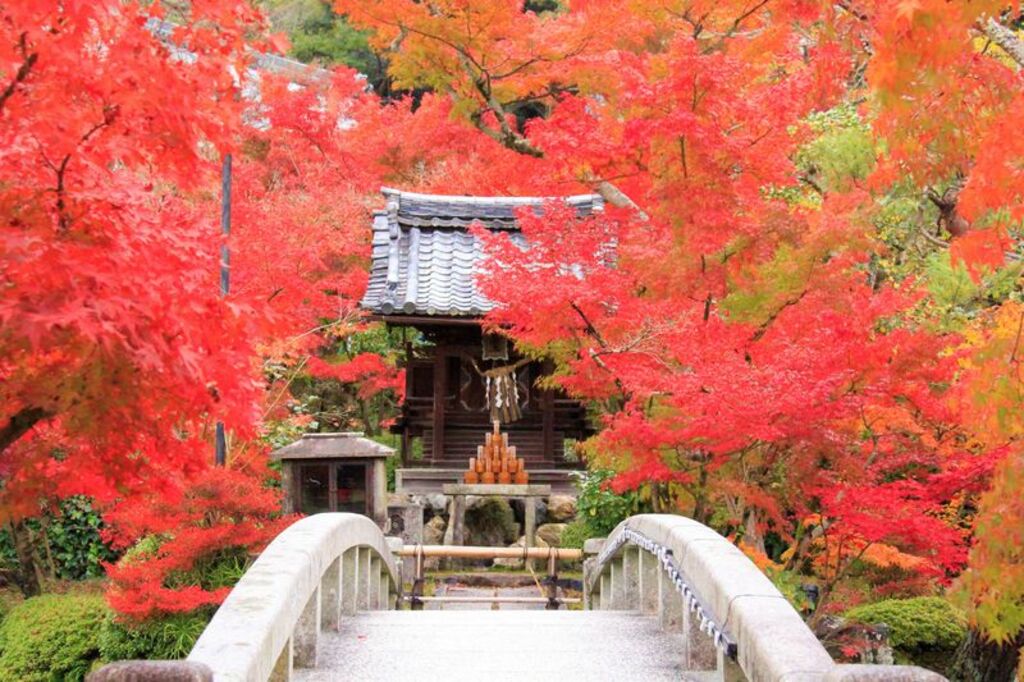
Eikan-dō Zenrin-ji is a Jodo-shu Seizan-Zenrinji Buddhist temple and the head temple of this sect of Buddhism. The most fascinating aspects of this temple is the image of the Amida Buddha looking back over his shoulder. Other noteworthy features of the temple are the Tahoto Pagoda, a small rock garden, small streams running across the grounds, the lovely garden replete with maple trees and the Hojo Pond. The garden and pond of the temple are famous for its autumnal foliage and nightly illumination during this period that attracts thousands of visitors.
20. Rengeoin Sanjusangendo
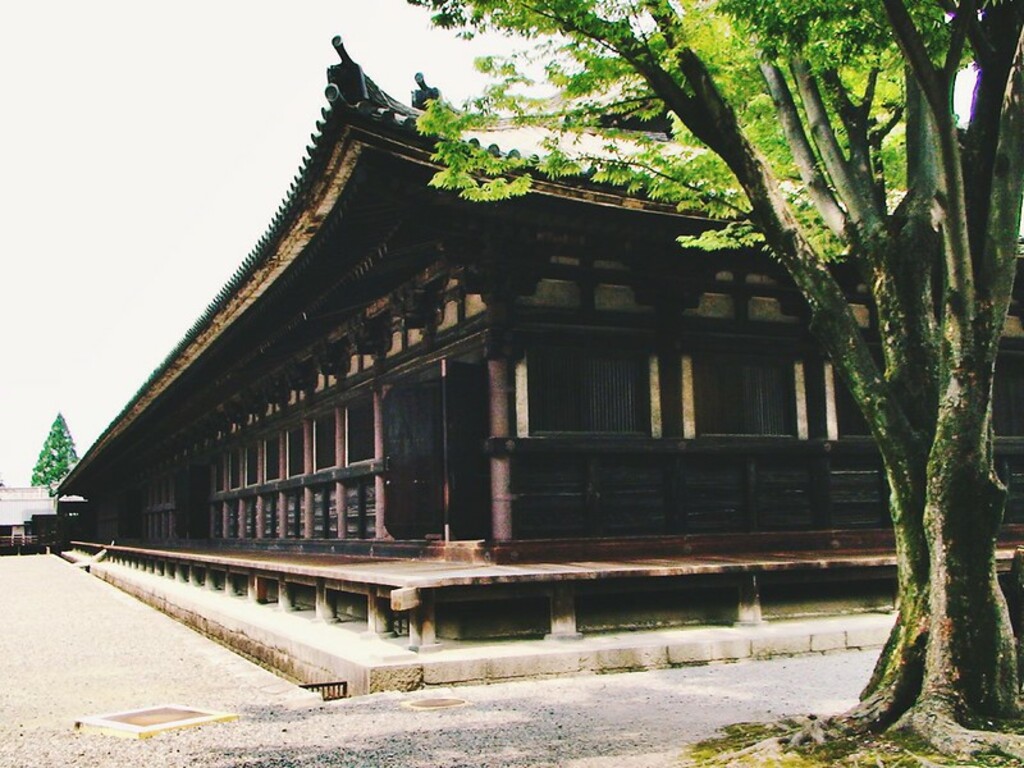
Situated in the Higashiyama district of Kyoto is the Rengeoin Sanjusangendo Buddhist temple, commonly known as just Sanjusangen-do Temple. At 120 metres (394 feet) long, its main hall is said to be the world’s longest wooden building and houses 1001 gilded statues of Kannon, the goddess of mercy, that make for an awe-inspiring sight. Visitors can admire the massive hall and the impressive details of the statues at this temple.
21. Nanzen-ji
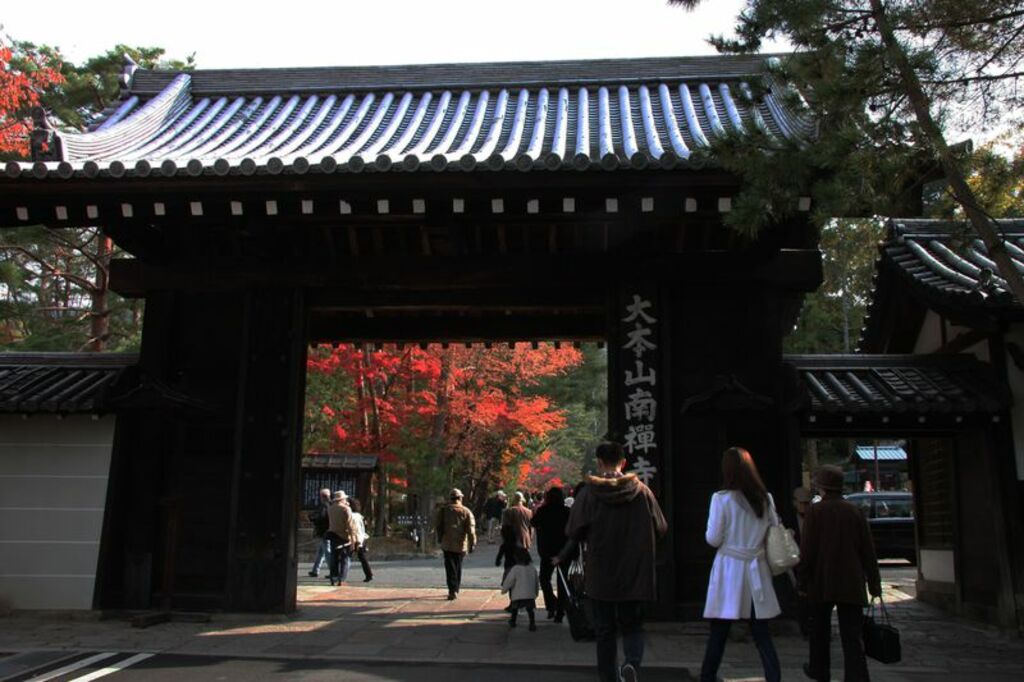
Formerly known as Zenrin-ji, Nanzen-ji is a Zen Buddhist temple that is one of the most important temples of Kyoto. It is famous for its traditional Zen architecture-style gardens, especially the main hall’s rock garden and the moss and rock garden of a sub-temple. These gardens don an altogether different aura when accented by the leaves changing colour in autumn. Other interesting features of the temple are exquisite paintings on sliding doors of the main hall, a large brick aqueduct, canopied trails, ancient shrines, etc.
22. Higashi Honganji

Higashi Honganji is a Buddhist temple of the Jodo-Shin sect that is representative of contemporary Japanese Buddhism. Spread out over 23 acres (9.3 hectares), visitors can explore various areas and buildings of the temple complex like the Founder’s Hall, Amida Hall, smaller pavilions used for ceremonies and events, a Japanese garden, etc. The Founder’s Hall is said to be is one of the largest wooden structures in the world and the Amida Hall has beautiful paintings from the Meiji period.
23. Ponto-chō (from USD 160.0)
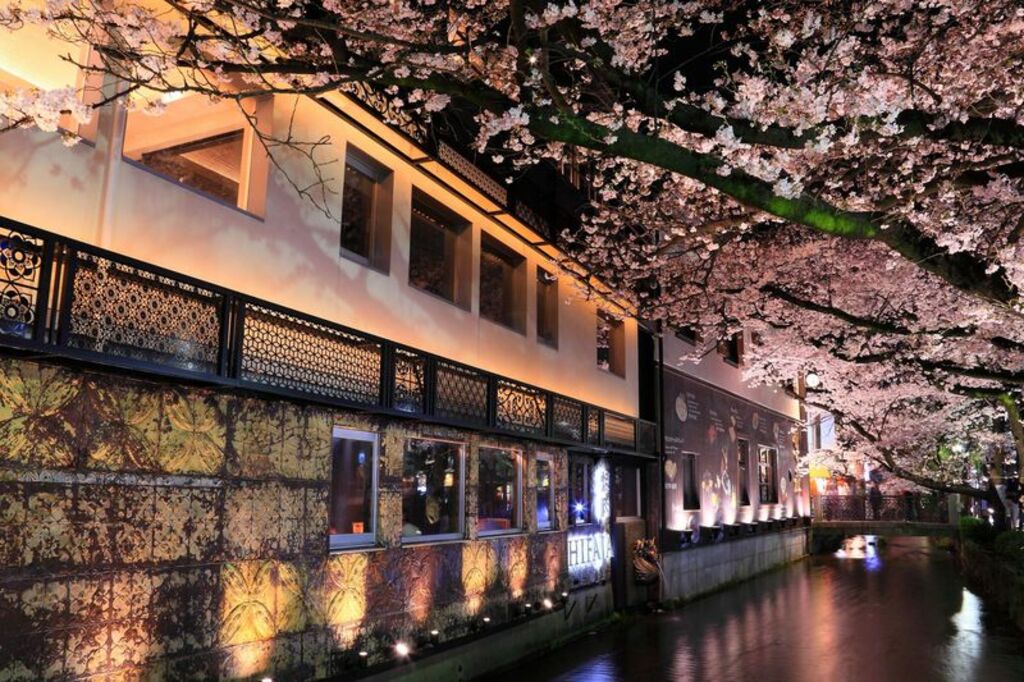
Stretching from Sanjo-dori to Shijo-dori in Kyoto is the famous Ponto-chō street that is well-known for its variety of traditional dining options. The street is also popular for its well-preserved traditional architecture evident in its many teahouses that are frequented by the well-heeled. Visitors can stroll through the street taking in a unique atmosphere or dine at a modern Kyoto or traditional yakitori establishment. Ponto-chō is also a good place to spot a geisha or maiko on her way to a teahouse engagement.
byFood Experience
1) Food tour of Pontocho
While you’re visiting Pontocho, make sure to book this byFood tour. It offers a delectable fusion of flavours and experiences, spanning four enticing food and drink destinations. Revel in Kyoto’s culinary specialities and seasonal delights, such as delicious charcoal-grilled meat and seafood skewers locally known as Sumi Yakiniku. Quench your thirst at a cosy standing bar and a sake-tasting shop with authentic Japanese sake. Non-alcoholic drinks are also available for kids to enjoy. Lastly, relish the legacy of a time-honoured noodle shop, serving handcrafted noodles for generations.
Evening in Kyoto Pontocho Food Tour
Duration: 3hours
24. Otowa Waterfall
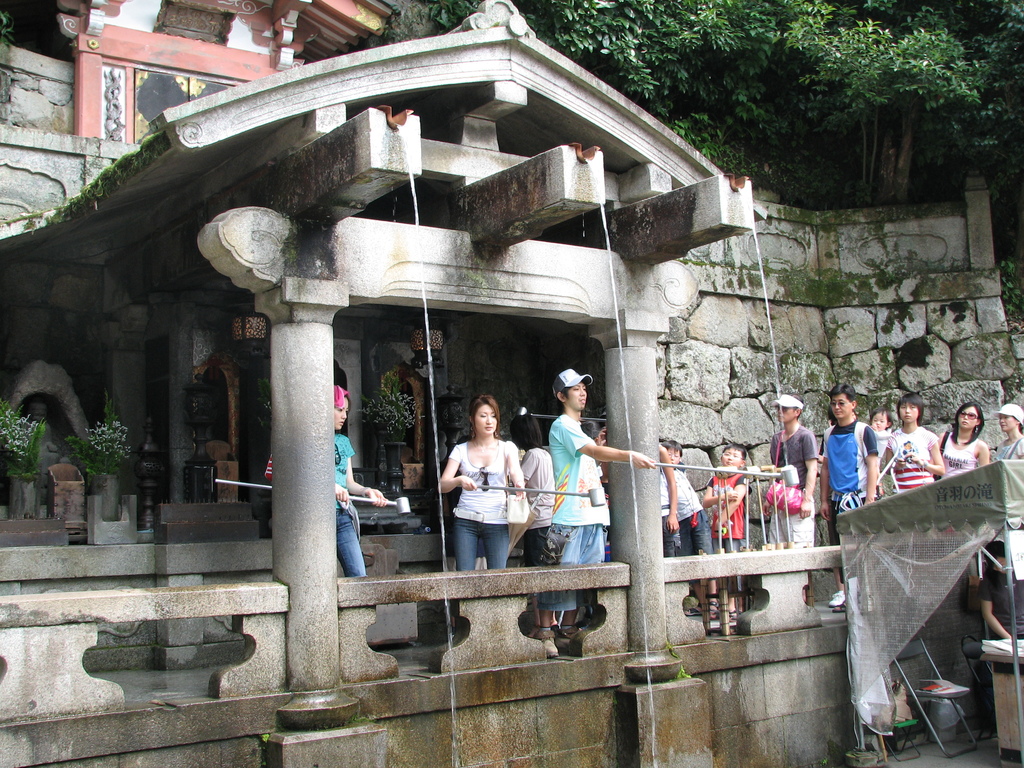
Otowa Waterfall is located beneath the famous wooden stage of Kiyomizu Temple and has a place of importance in the temple culture. The waters of this waterfall are divided into three streams here, each believed to represent a different virtue - long life, love, and success. Visitors are encouraged to pick a stream, dip a cup in it and drink from it. Drinking from all three streams is considered greedy and frowned upon. The waterfall is believed to originate from a nearby spring. The name of the temple translates to ‘clear water temple’ and is said to have been derived from the waterfall.
25. Kyoto National Museum
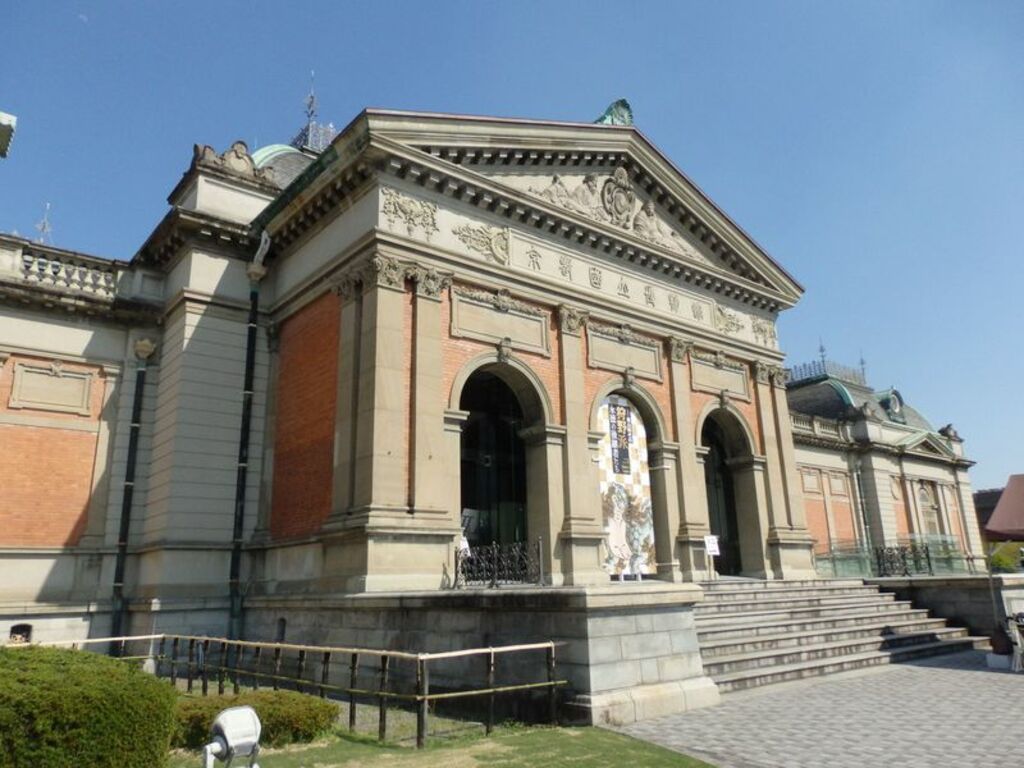
Open since 1897, Kyoto National Museum is the ultimate place to learn all about the city’s fascinating temple, shrine, and imperial history. It is counted among the oldest museums of Japan and visitors to the museum can check out their permanent collection and special temporary exhibitions. In the permanent collection of the museum are treasured items like ceramics, sculptures, paintings, exquisite costumes, archaeological relics, calligraphy, and more. The museum buildings themselves are beautiful to look at, with red brick facades, stylised entrance gates, etc. that resemble Meiji period architecture.
26. Maruyama Park
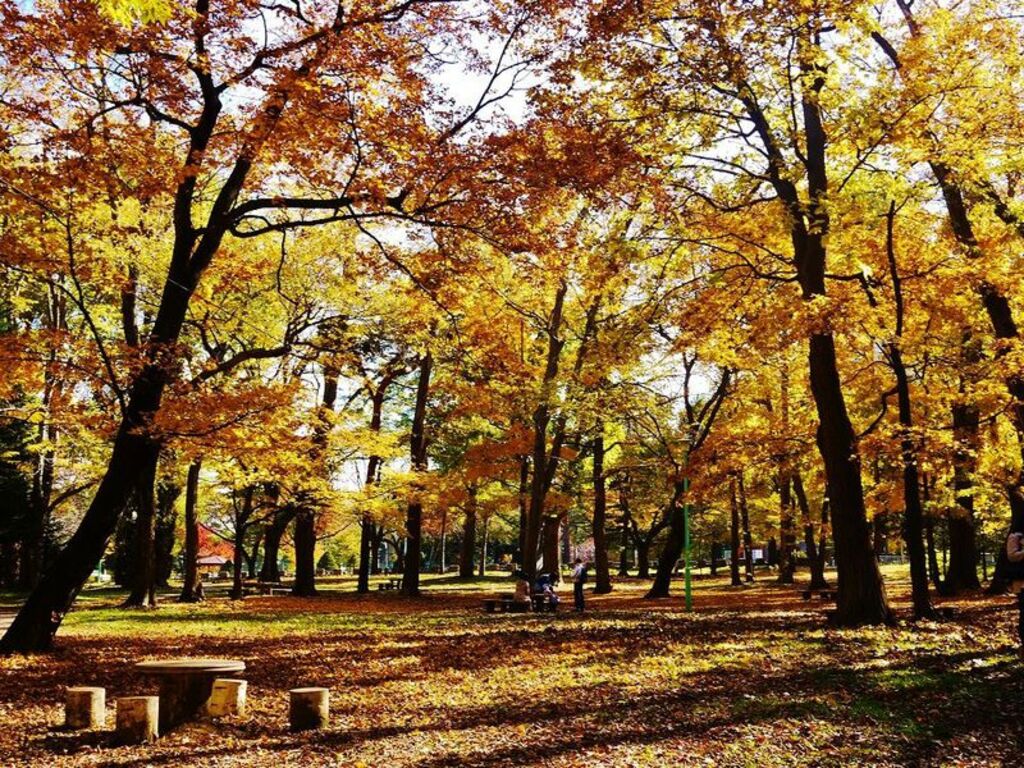
Popular as the main cherry blossom viewing spot in the city, Maruyama Park is the oldest park in Kyoto. Spread out over 86,000 square meters (925,696 square feet), this sprawling park has beautiful tree-lined walking paths, small orchards and groves, gardens, Japanese restaurants, rest areas, and more. A massive weeping cherry tree that is lit up at night is the main attraction at this park during the cherry blossom season and attracts throngs of visitors. Blossom-viewing parties, picnics under the trees, and leisurely walks in the park are also quite common during this season. At other times, the park is perfect for relaxing and admiring the natural beauty of the area.
27. Kyoto International Manga Museum
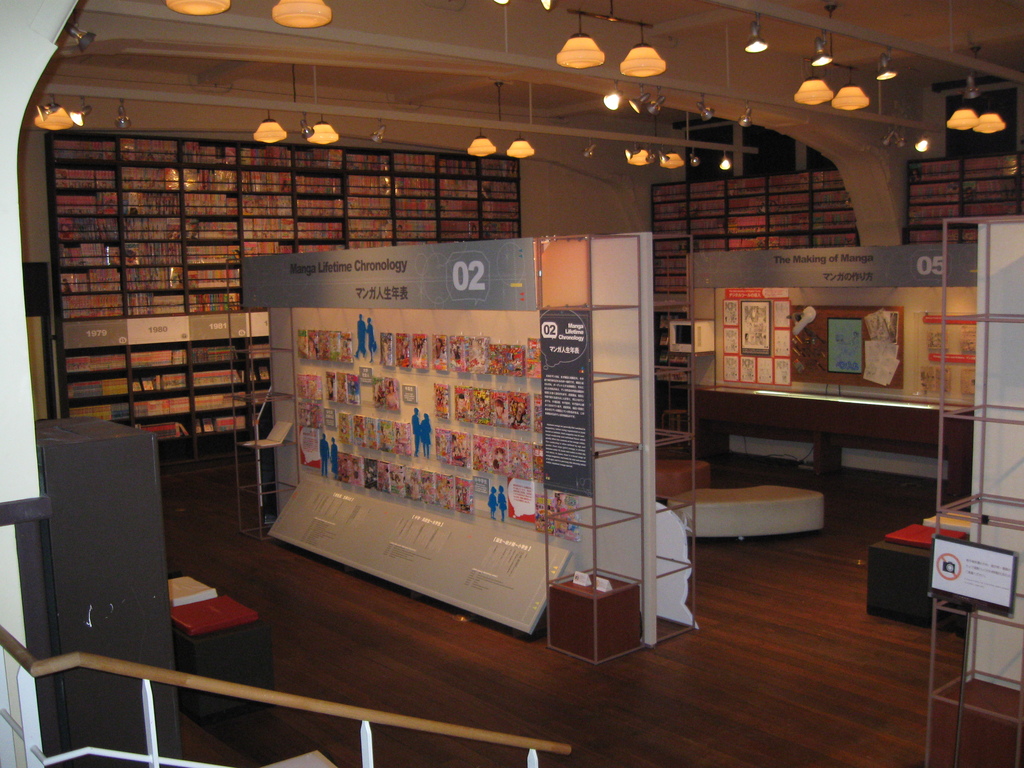
One of the most significant contributions of Japan to the world art scene is manga. Manga is a visual and graphic art form that has gained worldwide popularity and Kyoto has a museum dedicated to preserving all forms of manga materials, records, and artefacts. Kyoto International Manga Museum was established in 2006 and is a cultural facility that is both a library and a museum. There are more than 300,000 manga-related items that visitors can view through exhibitions, workshops, and seminars. You can see everything from 18th-century caricature woodblock prints, through 19th-century and pre-war magazines, to modern manga books and international publications. Visitors can browse through their massive collection of manga, both Japanese and with translations into foreign languages. This unique museum in Kyoto is a must-visit for all manga lovers.
28. Kinkaku-ji (from USD 19.0)
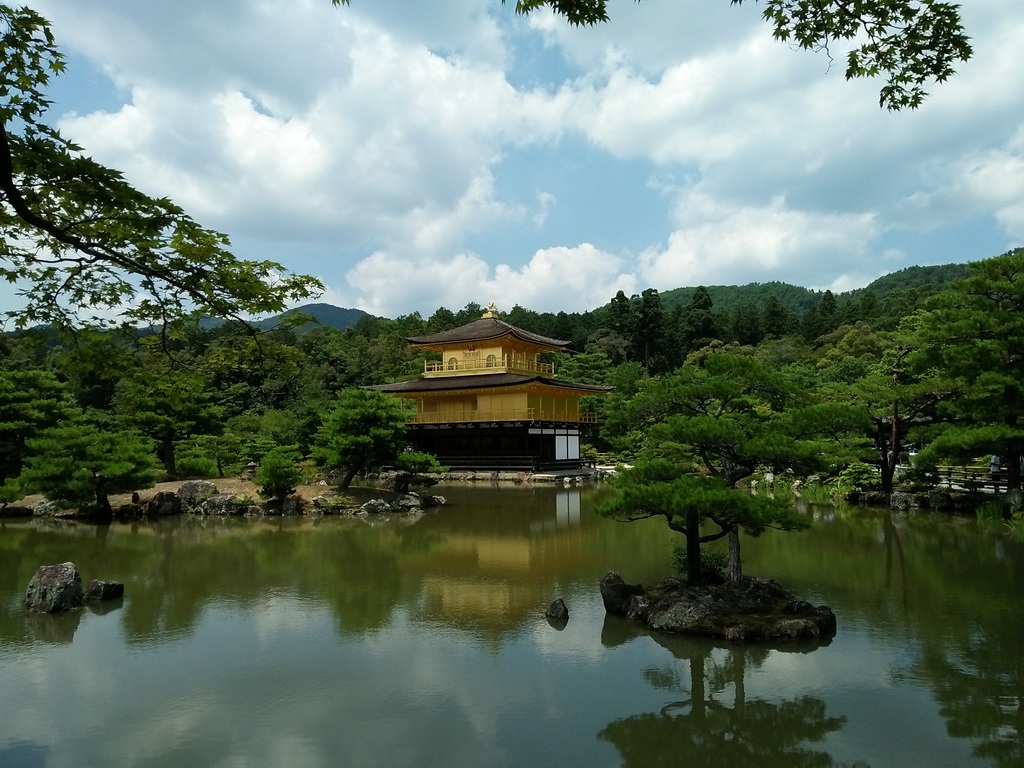
Also known as Rokuon-ji, Kinkaku-ji is unarguably one of Kyoto’s most famous temples and sees millions of visitors each year. It is a Zen temple that is best known for the gilded exterior of its main building that overlooks a picturesque pond. Each floor of the temple reflects a different architectural style. Visitors to the temple can also stroll along pretty paths lined with blossoming trees, traditionally designed gardens, and admire other smaller buildings.
Golden Pavilion Kinkaku-ji Temple Tour with Government-Licensed Guide
Duration: 1 hour
29. Fushimi Inari Taisha (from USD 19.0)
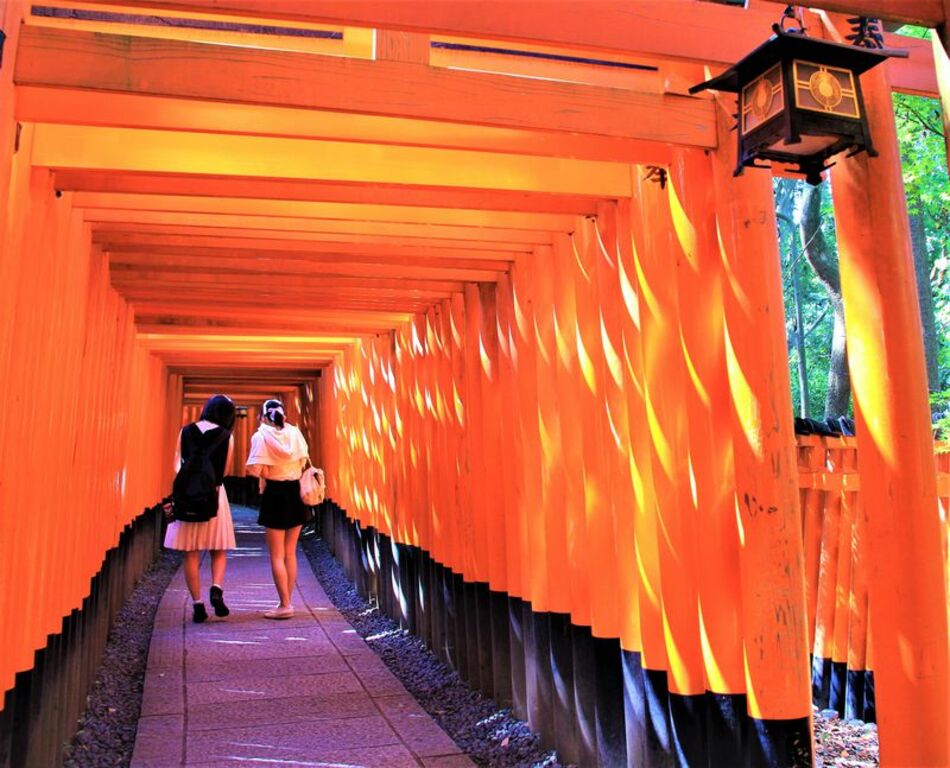
Probably one of the most well-known sites of Kyoto and Japan as a whole is Fushimi Inari Taisha. It is one of Kyoto’s most famous Shinto shrines and is famous for the thousands of vermillion torii gates that cover the mountain paths leading up to the shrine. Visitors can experience walking through the torii gates, visit the five shrines located here, admire the fox statues, attend festivals, or witness the rituals taking place at the shrine. Picturesque views of Kyoto can also be enjoyed from the Yotsutsuji intersection located on the shrine grounds. A number of street food stalls, souvenir shops, and vendors selling ritualistic offerings line the path to the entrance of the shrine.
Fushimi Inari Taisha Shrine Highlights Tour with Government-Licensed Guide
Duration: 1 hour
Delightful sights and sounds of Kyoto
Kyoto has much more to offer to visitors besides ancient temples and shrines; there are shopping streets, markets, museums, castles, gardens, and modern towers, too. To make the most of your time here, do remember to consult our guide for the best places to visit in Kyoto, Japan.
History
Get Trip101 in your inbox
Unsubscribe in one click. See our Privacy Policy for more information on how we use your data












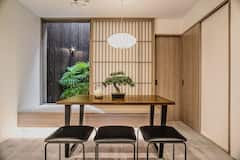



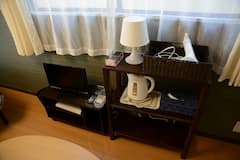















Create an account to